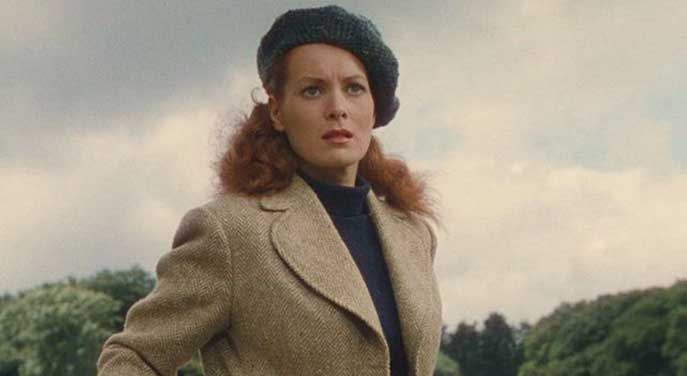 With St. Patrick’s Day upon us, an Irish theme seems appropriate. And a little frivolity wouldn’t go amiss in these troubled times.
With St. Patrick’s Day upon us, an Irish theme seems appropriate. And a little frivolity wouldn’t go amiss in these troubled times.
It’s fair to say that Ireland has generally punched above its weight on the silver screen.
Back in the 1930s, Maureen O’Sullivan (from County Roscommon) played Jane in the popular Tarzan film series, and Barry Fitzgerald (from County Dublin) commenced a character acting career that spanned more than two decades – including a Best Supporting Actor Oscar. Later, stars like Richard Harris, Liam Neeson and Pierce Brosnan became major figures.
The Irish Times newspaper listed no fewer than 50 names in its 2020 assessment of the greatest Irish film actors of all time. And at the very top of the list was Dublin’s Maureen O’Hara, the redhead dubbed “Queen of Technicolor” during Hollywood’s Golden Age.
Born Maureen Fitzsimons in 1920, she was the second of six children and grew up in the affluent Dublin suburb of Ranelagh. Economically and socially, the Ireland of her childhood bore little resemblance to the Ireland of today. In comparative European terms, its economy was underdeveloped and not particularly entrepreneurial. And an austere Catholic ethos dominated its social mores.
But Maureen was relatively insulated. Her father was a businessman who also owned a piece of the Shamrock Rovers football club and her mother had been an operatic contralto. Whatever material deprivation existed in 1920s and ’30s Dublin didn’t touch the young girl’s life.
By all accounts, she was a strong-willed, assertive child who didn’t mince words. To quote: “I didn’t take discipline very well. I was never slapped in school. If a teacher had slapped me I would have bitten her.”
She was also what was called a tomboy, very much into physical activities – an attribute that subsequently facilitated doing many of her own cinematic stunts. But perhaps the most important youthful passion was acting. Beginning at the age of 10, theatrics became a big part of her life and she joined Dublin’s famous Abbey Theatre in her teens.
The professional surname of O’Hara was adopted in 1939 for her appearance in the British film production of Daphne du Maurier’s Jamaica Inn, a career break largely attributable to the actor Charles Laughton. Laughton was sufficiently impressed by her potential that he then brought her to Hollywood to play the role of the gypsy girl Esmeralda in The Hunchback of Notre Dame.
The years 1941 and ’42 were particularly auspicious for O’Hara.
|
Related Stories |
 |
| Cancel culture equivalent to infamous Hollywood blacklist
|
| The rise and fall of a legendary Hollywood duo
|
| Hollywood icons and the Second World War
|
She made the first of what was to be several notable movies with Irish-American director John Ford. Set in Wales but shot in California, 1941’s How Green Was My Valley won several Academy Awards, including Best Picture and Best Director.
Then there was her 1942 introduction to Technicolor in To the Shores of Tripoli. With its intensely saturated hues, the process and O’Hara were made for each other. The New York Times’ 2015 obituary hit the nail on the head: “Ms. O’Hara was called the Queen of Technicolor because … nothing seemed to show off its splendor better than her rich red hair, bright green eyes and flawless peaches-and-cream complexion.”
She also made The Black Swan in 1942 with matinee idol Tyrone Power. It was her initial foray into the swashbuckler genre, the kind of popular adventure romp for which her physical agility was well suited. Reputedly, her skill with a sword in 1952’s Against All Flags required judicious editing lest she show up her co-star Errol Flynn!
O’Hara made more than 50 theatrical films during her long career. Probably the best known nowadays are the perennial Christmas favourite Miracle on 34th Street and The Quiet Man. She was especially fond of the latter, which reunited her with director Ford and actor John Wayne.
The Quiet Man’s origins can be traced to a 1933 Saturday Evening Post short story, and the idea for filming it had been percolating in Ford’s mind for almost 20 years. Finally, he got reluctant studio financing and it went before the cameras on location in the west of Ireland in June 1951. Released in 1952, it confounded the studio’s low expectations by becoming a major financial success, thanks in no small part to the obvious chemistry between its stars.
Whether O’Hara really was Ireland’s greatest film actor is, of course, a matter of opinion. But with her beauty, indelible screen presence, strong personality and lengthy career, she was a first-rate film star by anyone’s definition.
Troy Media columnist Pat Murphy casts a history buff’s eye at the goings-on in our world. Never cynical – well, perhaps a little bit. For interview requests, click here.
The opinions expressed by our columnists and contributors are theirs alone and do not inherently or expressly reflect the views of our publication.
© Troy Media
Troy Media is an editorial content provider to media outlets and its own hosted community news outlets across Canada.



I was so pleased to read your piece on Maureen O’Hara and must tell you that after 25+ years of editing and publishing her official website (first on regular Internet then on Facebook) yours was the most accurate I’ve ever read (and I’ve read a lot of them). LOL Maureen was also a good friend for those years and I even went to Ireland to visit her there in 1999. I am now 84 years old and thanks to Maureen I have had a wonderful adventure and wonderful memories.
Happy St. Patrick’s Day to a real journalist!